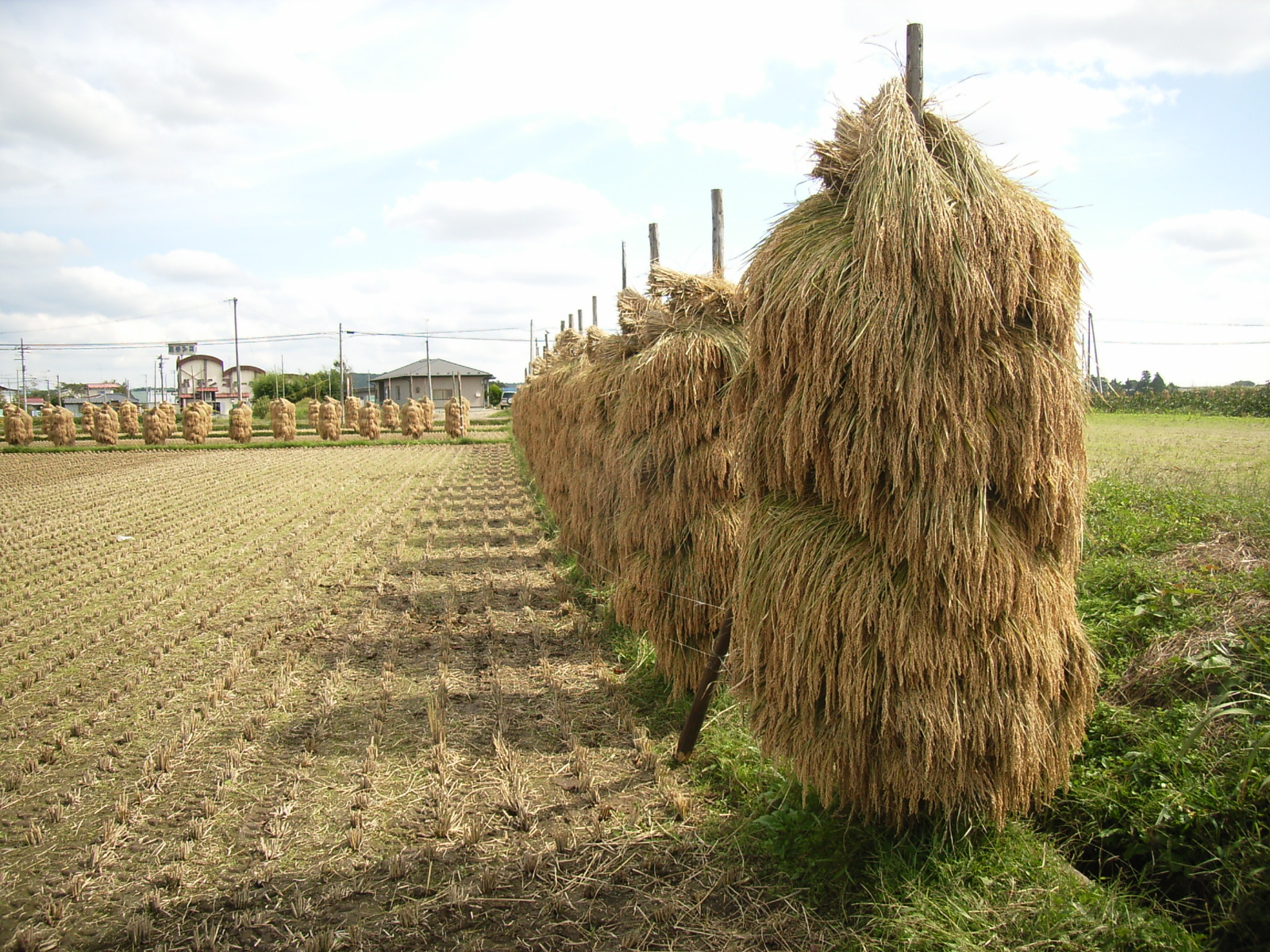|
Sannō-Gakoi Site
The is an archaeological site located in the city of Kurihara, Miyagi Prefecture, in the Tōhoku region of northern Japan, containing the ruins of a late Jōmon period to Yayoi period (approximately 500 BC to 0 BC) settlement. The site was designated a National Historic Site in 1991 by the Japanese government. Overview Located only a half kilometer from the center of former Sanno town, the site is on a river terrace on the north bank of the Nakasaki River, which forms a natural fortification. The site was discovered during the construction of school buildings and rescue archaeology excavations conducted in 1962 and 1964 revealed the large extent and importance of the site, leading to its National Historic Site designation in 1971. The site has multiple strata, with numerous relics excavated in each layer. The upper layers, corresponding to the Yayoi period, contained hearth traces, stone tools and tombs. However, of especial interest to archaeologists, is the lower three-meter ... [...More Info...] [...Related Items...] OR: [Wikipedia] [Google] [Baidu] |
Kurihara, Miyagi
Kurihara City Hall is a city located in Miyagi Prefecture, Japan. , the city had an estimated population of 66,565, and a population density of 83 persons per km2 in 24,994 households. The total area of the city is . Parts of the city are within the borders of the Kurikoma Quasi-National Park. Geography Kurihara covers a part of the northwestern corner of Miyagi Prefecture. It is mostly rice farmland, and small mountain ridges, the largest of which cluster around Mount Kurikoma, the tallest mountain in Kurihara, which is located at the furthest northwestern point of Miyagi Prefecture. In summer, the lotus on Lake Izunuma bloom. In fall, Mount Kurikoma is covered in fall colors and in winter migrating swans and geese come in flocks to spend the season on Kurihara's lakes. Neighboring municipalities Miyagi Prefecture * Tome * Ōsaki Akita Prefecture * Yuzawa *Higashinaruse Iwate Prefecture * Ichinoseki Climate The climate of Kurihara is classified as humid subtropical (Cfa) pe ... [...More Info...] [...Related Items...] OR: [Wikipedia] [Google] [Baidu] |
Peat
Peat (), also known as turf (), is an accumulation of partially decayed vegetation or organic matter. It is unique to natural areas called peatlands, bogs, mires, moors, or muskegs. The peatland ecosystem covers and is the most efficient carbon sink on the planet, because peatland plants capture carbon dioxide (CO2) naturally released from the peat, maintaining an equilibrium. In natural peatlands, the "annual rate of biomass production is greater than the rate of decomposition", but it takes "thousands of years for peatlands to develop the deposits of , which is the average depth of the boreal orthernpeatlands", which store around 415 gigatonnes (Gt) of carbon (about 46 times 2019 global CO2 emissions). Globally, peat stores up to 550 Gt of carbon, 42% of all soil carbon, which exceeds the carbon stored in all other vegetation types, including the world's forests, although it covers just 3% of the land's surface. ''Sphagnum'' moss, also called peat moss, is one of the ... [...More Info...] [...Related Items...] OR: [Wikipedia] [Google] [Baidu] |
Tourist Attractions In Miyagi Prefecture
Tourism is travel for pleasure or business; also the theory and practice of touring (other), touring, the business of attracting, accommodating, and entertaining tourists, and the business of operating tour (other), tours. The World Tourism Organization defines tourism more generally, in terms which go "beyond the common perception of tourism as being limited to holiday activity only", as people "travelling to and staying in places outside their usual environment for not more than one consecutive year for leisure and not less than 24 hours, business and other purposes". Tourism can be Domestic tourism, domestic (within the traveller's own country) or International tourism, international, and international tourism has both incoming and outgoing implications on a country's balance of payments. Tourism numbers declined as a result of a strong economic slowdown (the late-2000s recession) between the second half of 2008 and the end of 2009, and in consequence of t ... [...More Info...] [...Related Items...] OR: [Wikipedia] [Google] [Baidu] |

.jpg)
